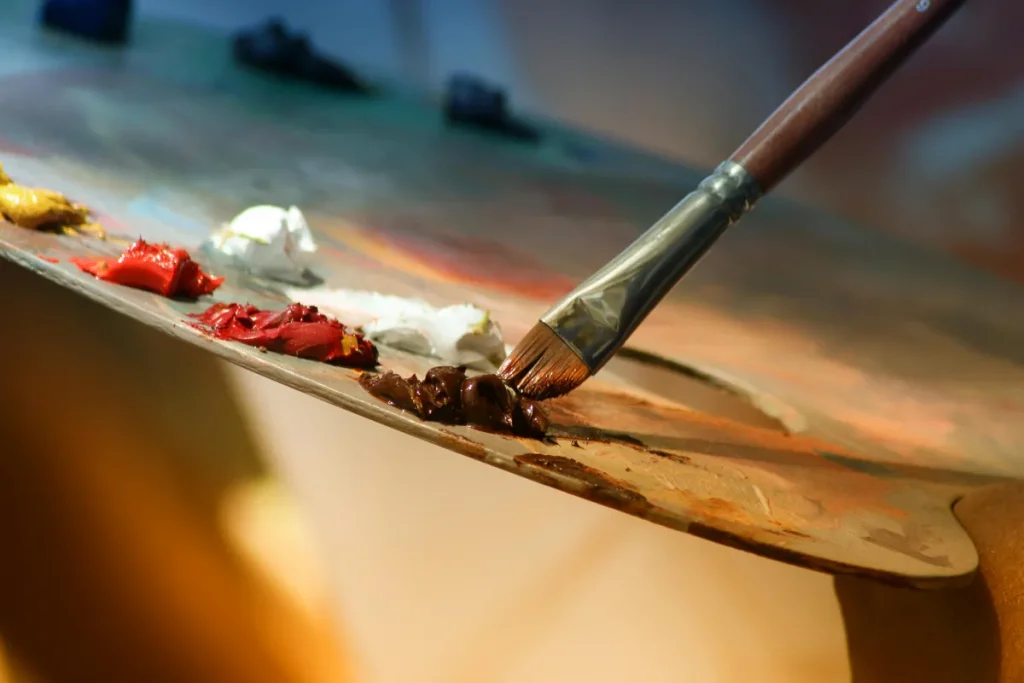
Among the most intimate and fulfilling means of expression is creating art. But, if you are like most artists, you have most likely experienced the pull of doubt about the appropriate media. Given the abundance of choices—from metallic coatings to acrylic paints—the process might appear intimidating. The good news is that discovering media is a fascinating trip toward your artistic expression. Unlocking your creative potential depends on knowing which media to use, whether your work needs to be revitalized, or you are just starting.
Thinking About the Story You Want to Tell
Every artist has a narrative to tell; the media you choose will greatly affect the way your work speaks. Find yourself pulled to strong, expressive markings. Your best friend may be acrylic paints. Would you like to give your works a little luxury or drama? Great highlights and shiny textures may be produced with metallic paint. You can reduce your options to media that fit your vision by thinking about the feelings or ideas you wish your work to arouse.
Sometimes, your tale could call for a mix of media. One effective approach to examining the interactions of several elements is mixed-media art. Imagine matching the slick gloss of metallic treatments with the rough, gritty lines of charcoal. Your story will be enhanced by this contrast, which can produce dynamic tension and visual intrigue. Break the restrictions and mix whatever items you like until you discover the blend that most speaks to you.
Considering the Practicalities of Your Medium
Although discovery fuels creativity, practical factors also help you to choose your medium. Consider your desk, financial situation, and free time. For example, oil paintings call for a well-ventilated space and long drying times, which might not be appropriate if you live in a tiny flat or have limited tolerance. For painters on the go, however, materials like acrylics dry fast and are simpler to clean up, which makes them perfect.
One also should give upkeep and storage some thought. While pottery or big canvases need more room, watercolors and pencils are small and easy to keep. Some materials might also need particular care to maintain their gloss. Including these pragmatic aspects can not only help you simplify your artistic approach but also position you for long-term success.
Listening to Your Inner Artistic Intuition
The medium finds you sometimes. As you create, pay close attention to what seems natural. In the smooth action of a paintbrush, do you forget yourself? Does the way a palette knife scrapes across canvas inspire you? Trust these impulses; typically, your subconscious is directing you toward your artistic truth.
Also, startling discoveries might come from your intuition. Maybe you never thought about using paints until you tried them, and now you can’t see your work without their brilliant shallow. Following your instincts is about balancing discovery with aim, not about giving up reason. Let what feels good guide you; you will naturally move toward the media that fits you best.
Seeking Inspiration from Other Artists
Seeing the work of others might inspire fresh ideas when you’re stuck or uncertain. See exhibitions, peruse internet art groups, or learn the methods of artists you respect. Consider their materials and how those decisions affect their final creations. Seeing how these paints may provide a piece with more dimension and depth could motivate you to use them in your work.
Still, inspiration does not equate to copy. Investigate your thoughts, starting from what you see as a jumping-off pad. If you find great resonance in the style or medium of a given artist, attempt to find out why. Is the color pallet the same? What textures are there? The atmosphere is Knowing these components will enable you to turn inspiration into something especially yours.
Conclusion
Choosing the correct media is about appreciating the trip rather than racing to a destination. Every experiment, successful or unsuccessful, helps you to define your creative individuality. What counts most is that your medium represents your vision and makes you happy, whether your taste is for the fluidity of watercolors, or the texture of pastels. Then, choose a brush, a pencil, or a palette knife and start. A perfect fit is just waiting for you to find.

